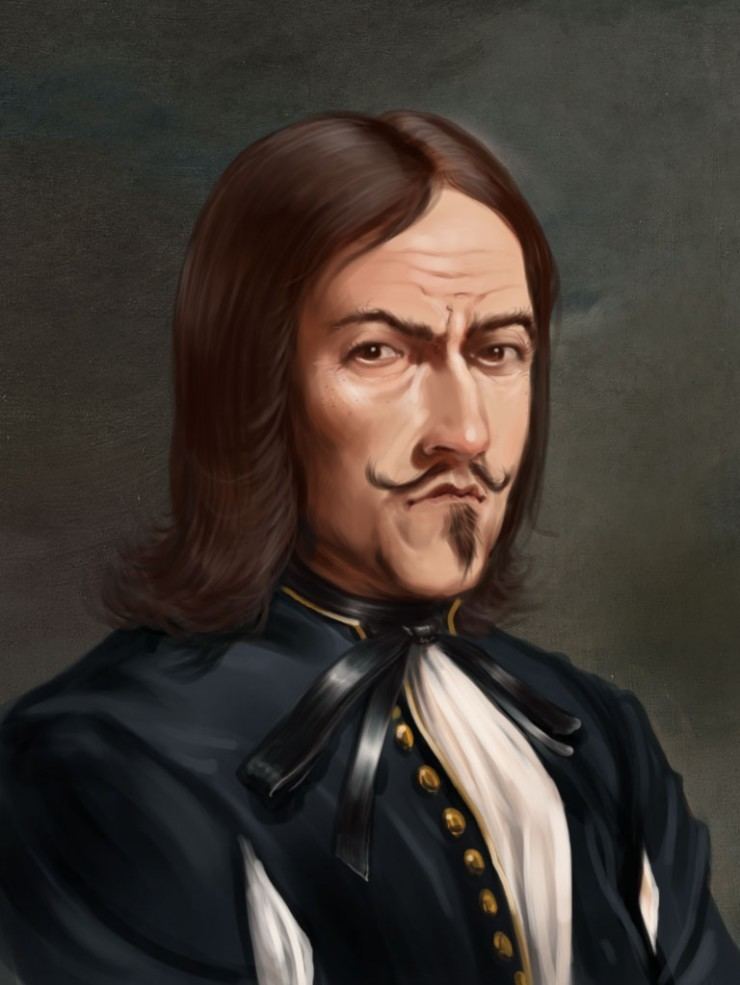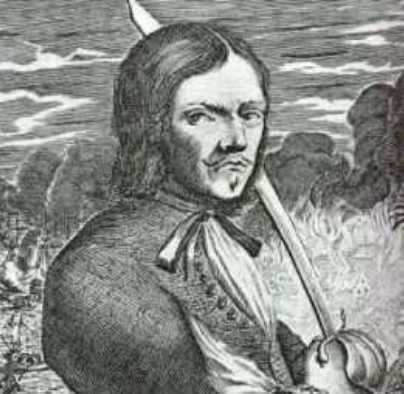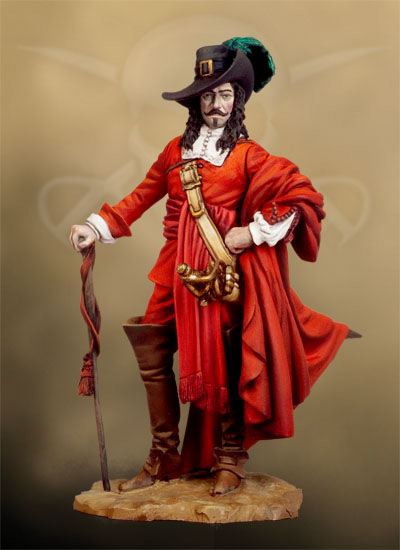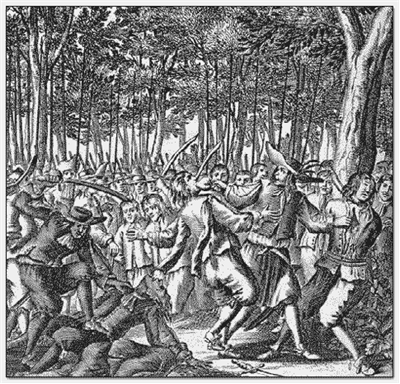Nickname Flail of the Spanish Allegiance None Rank Captain Other name Flail of the Spanish | Years active c. 1660–c. 1668 | |
 | ||
Similar Alexandre Exquemelin, Henry Morgan, Edward Low, Roche Braziliano, Bartholomew Roberts | ||
Jean-David Nau ([ʒɑ̃ david no]) (c. 1635 – c. 1668), better known as François l'Olonnais ([fʁɑ̃swa lolɔnɛ]), was a French pirate active in the Caribbean during the 1660s.
Contents

Early life

In his 1684 account The History of the Buccaneers of America, Alexandre Exquemelin notes l'Olonnais' place of birth as les Sables-d'Olonne first arrived in the Caribbean as an indentured servant during the 1650s. By 1660 his servitude was complete. He began to wander various islands before arriving in Saint-Domingue - in what is now Haiti - and becoming a buccaneer. He preyed upon shipping from the Spanish West Indies and the Spanish Main.

A year or two (dates regarding l'Olonnais are uncertain) into his piratical career, l'Olonnais was shipwrecked near Campeche in Mexico. A party of Spanish soldiers attacked l'Olonnais and his crew, killing almost the entire party. L'Olonnais himself survived by covering himself in the blood of others and hiding amongst the dead.

After the Spanish departed, l'Olonnais with the assistance of some slaves escaped and made his way to the island of Tortuga. A short time later he and his crew held a town hostage, demanding a ransom from its Spanish rulers. The governor of Havana sent a ship to kill l'Olonnais' party. l'Olonnais captured and beheaded the entire raiding crew save one, whom he spared so that a message could be delivered to Havana: "I shall never henceforward give quarter to any Spaniard whatsoever."
The sacking of Maracaibo

In 1666 l'Olonnais sailed from Tortuga with a fleet of eight ships and a crew of 440 pirates to sack Maracaibo in what is modern day Venezuela. En route, l'Olonnais crossed paths with a Spanish treasure ship which he captured, along with its cargo of cocoa beans, gemstones and more than 260,000 Spanish dollars.
At the time the entrance to Lake Maracaibo and thus the city itself was defended by the fort of San Carlos de la Barra with sixteen guns, which was thought to be impregnable. L'Olonnais approached it from its undefended landward side and took it in few hours. He then proceeded to pillage the city, and found that most of the residents had fled and that their gold had been hidden. L'Olonnais' men tracked down the residents and tortured them until they revealed the location of their possessions. They also seized the fort's cannon and demolished most of the town's defence walls to ensure that a hasty retreat was possible.
L'Olonnais himself was an expert torturer, and his techniques included slicing portions of flesh off the victim with a sword, burning them alive, or tying knotted "woolding" (rope bound around a ship's mast to strengthen it) around the victim's head until their eyes were forced out.
Over the following two months, l'Olonnais and his men raped, pillaged and eventually burned much of Maracaibo before moving to San Antonio de Gibraltar, Venezuela, on the eastern shore of Lake Maracaibo. Despite being outnumbered the pirates slaughtered 500 soldiers of Gibraltar's garrison and held the city for ransom. Despite the payment of the ransom (20,000 pieces of eight and five hundred cattle), l'Olonnais continued to ransack the city, acquiring a total of 260,000 pieces of eight, gems, silverware, silks as well as a number of slaves.
Expedition to Honduras
Word of his attack on Maracaibo and Gibraltar reached Tortuga, and l'Olonnais earned a reputation for his ferocity and cruelty. He was given the nickname "The Bane of Spain" (French: Fléau des Espagnols). Seven hundred pirates enlisted with him when he mounted his next expedition, this time to the Central American mainland. In 1667, after pillaging Puerto Cavallo on the coast of Honduras, l'Olonnais was ambushed by a large force of Spanish soldiers while en route to San Pedro. Only narrowly escaping with his life, l'Olonnais captured two Spaniards. Exquemelin wrote:
" He drew his cutlass, and with it cut open the breast of one of those poor Spanish, and pulling out his heart with his sacrilegious hands, began to bite and gnaw it with his teeth, like a ravenous wolf, saying to the rest: I will serve you all alike, if you show me not another way".
Horrified, the surviving Spaniard showed l'Olonnais a clear route to San Pedro. L'Olonnais and the few men still surviving were repelled, and retreated back to their ship. They ran aground on a shoal on the coast of Darien, a province of Panama. Unable to dislodge their craft, they headed inland to find food. They were captured by the Kuna tribe in Darién. L'Olonnais was eaten by the natives. Exquemelin wrote that the natives:
"...tore him in pieces alive, throwing his body limb by limb into the fire and his ashes into the air; to the intent no trace nor memory might remain of such an infamous, inhuman creature".
